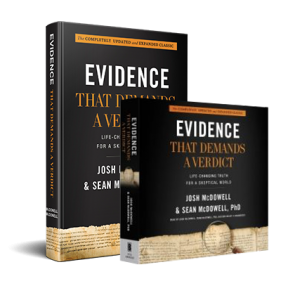
Scribes are human; humans make mistakes. Does that mean the Bible’s accuracy is in question?
The answer, in a word: No.
It can’t be denied that both unintended error and intentional modification have occurred in biblical texts over time. But most of these can be identified, categorized, and properly understood in their relation to the overall reliability of the transmission of the original content of Scripture.
Scholars have been debating the Bible’s words and meanings for decades. Skeptics assert that the Bible can’t be taken literally, but then turn around and demand that every word of it be proven to have happened exactly as written. For some skeptics, the Bible will never be palatable enough to be believed. Yet early church leaders thought enough of the Scripture to declare it God’s Word. In part because so much historical documentation supports its reliable transmission.
Let’s look at the types of errors and changes scribes made, so we can intelligently and respectfully respond to critics who challenge the authority of the Bible. Human effort, by the way, will never be able to invalidate Scripture. Why? Because God is way bigger than anything we might do — intentionally or by accident — to thwart or undermine Him.
Unintentional Scribal Error
Examples of some of the transcription errors inadvertently added by scribes:
Mistaken Letters. The confusion of similar looking letters caused some scribes to make errors as they copied scripture. An example: In Genesis a group of people called the “Dodanim” are called the “Rodanim” in Chronicles. This error doesn’t invalidate the Bible.
Homophony. This error results in the substitution of words that sound familiar. If we were to use a modern example, we could go with “its” for “it’s,” or “there” for “their.” This error doesn’t invalidate the Bible.
Haplography. In this case, the error is caused by the omission of a letter or word. This, we know, from our own copying of class notes or grocery lists, can easily happen when our eyes skip ahead to another word or line with the same word or letter. This error doesn’t invalidate the Bible.
Dittography. Here, letters or words are mistakenly doubled as they are copied. Adding an extra “and” or “the” to text is an error that I sometimes make if I am tired, writing too fast, or get distracted. You’ve made this error, too, right? And yet you still clearly understand the meaning of what you wrote. This error doesn’t invalidate the Bible.
Metathesis. This error results in the transposition of letters in a word. We might, for example, write “perscription” for the medicine a doctor wants us to take, when the correct spelling is “prescription.” This error doesn’t invalidate the Bible.
These errors have been easily identified by scribes and scholars in textual transmission, and bear no significant effect on the meaning of the text.
Intentional Scribal Changes
Examples of some of the transcription changes added by scribes:
Spelling/Grammar/Word Changes. As scribes copied text, they sometimes updated archaic language to contemporary standards and culture, to enhance understanding by modern readers. We routinely do this today, as language is always adapting. “Keep it real!” has become “Keep it 100!” And instead of calling someone’s behavior “crazy,” some now use the word “cray.” This New Slang Dictionary shows how words themselves change to adapt to modern society, but their inherent meaning remains unchanged. And this short video by Sean McDowell does a great job of explaining why different versions of the Bible use different words to convey the same meaning. For a more in-depth explanation of why there are so many translations of the Bible, check out this helpful video by TheLampLight.net. This change doesn’t invalidate the Bible.
Harmonization. Here, scribes modified a passage for the purpose of bringing it into line with a parallel passage. A biblical example: Genesis 14:14 states that Abraham pursued his nephew Lot’s captors as far as the city of Dan. However, according to Judges 18:29 and Joshua 19:47, the city would not have been known as Dan until much later. So it is evident that a scribe updated the city name to Dan, from its older names Laish and Leshem, to ensure his readers would recognize the city. This change doesn’t invalidate the Bible.
Euphemistic Changes. In some cases, scribes changed elements of the text that they considered inappropriate or offensive to the sensitivities of the culture. For example, 2 Samuel 12:9 was changed from “Why have you despised the Lord?” to “Why have you despised the word of the Lord?” One modern euphemism we use today is to say someone “passed away,” when we don’t wish to be so blunt or harsh by saying someone “died.” Another euphemism is to say a couple is “sleeping together” instead of saying they’re having “sex.” This change doesn’t invalidate the Bible.
Theological Changes. These changes were made because God or other biblical persons were displayed in an unfavorable or irreverent manner. An example: Genesis 18:22 originally stated that “God remained standing before Abraham.” However, the image of standing before someone had come to denote a role of servitude to that person. So the sentence structure was rearranged to clearly show that it is Abraham deferring to God’s authority. This change doesn’t invalidate the Bible.
As you can see, these changes do not compromise the reliability or accuracy of the Bible we use today. In many cases the changes were obvious, and scholars can identify the original reading with a high degree of confidence.
The Bible is God’s Word
We hope, as you travel this blog series with us, that you’re gaining a clear understanding of just how meticulously scribes attempted to transcribe scripture. Yes, they made some mistakes. But scholars can clearly see the path of where and when mistakes and changes were made, because of the large number of existent manuscripts. It is because scribes so highly valued Scripture and were so careful in their handling of it, that most scholars agree that the Bible has been faithfully passed down through the centuries.
Commit to a respectful conversation with your friends who tell you that the Bible can’t be true. Share with them some of the facts you’ve been learning in this blog series over the last two months. You might be the person God uses to open their mind to the possibility to God’s truths.

This blog post highlights Josh and Sean McDowell’s recently revised apologetics classic, Evidence That Demands a Verdict. We are certain this fully updated and expanded resource will be an effective evangelism tool for you, and strengthen your faith by answering the toughest questions tossed to you by skeptics. Know what you know, because it’s true. But share this truth with LOVE.



